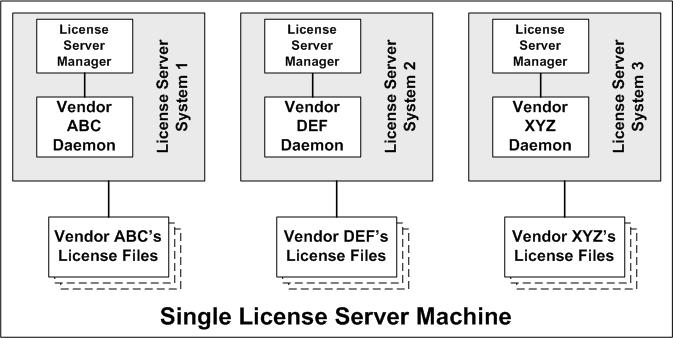One System with Multiple License Server Instances
In this model, each vendor daemon and its associated license file or files is served by its own license server manager, and everything is contained in one system. {Hyperlink}Figure {Default ¹ Font} depicts this scheme. 
Multiple license server managers, multiple license files
When maintaining separate license servers on the same system, keep in mind:
|
•
|
If the TCP/IP port number is specified on the SERVER line, it must be different for each license server instance. Use a standard text editor to change the TCP/IP port number in each license file so that they are all different. For information on the SERVER format, see SERVER Lines. |
Note:For security purposes, best practice is not to let the license server manager assign a default port for each license server. Instead, for each server, specify a unique port number outside of the range 27000 through 27009.
|
•
|
You must make sure that you are using a compatible version of lmadmin (or lmgrd) for each particular license file. This is done by using an explicit path. See Version Component Compatibility. |
|
•
|
The number of license server instances is limited only by the CPU, available memory, and networking of the system. |
Advantages
|
•
|
The license files for each software publisher are independent from one another. |
|
•
|
License servers are maintained separately. If one server goes down, the other servers continue to serve licenses. |
|
•
|
Each server has its own debug log. |
Disadvantages
|
•
|
Administrative overhead is high. |
|
•
|
If the system goes down, all licenses are disabled. |
|
•
|
License request load is concentrated to one system. |
